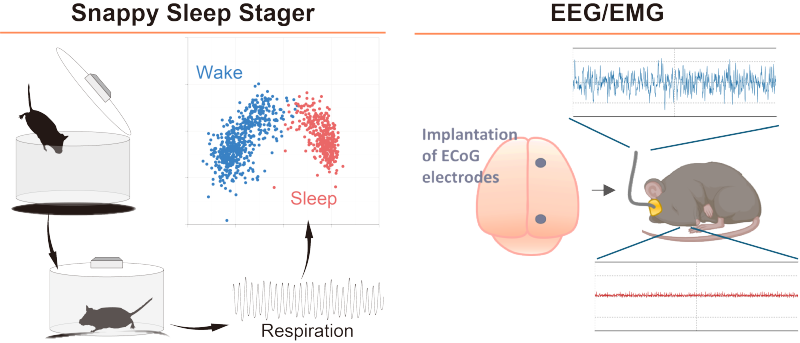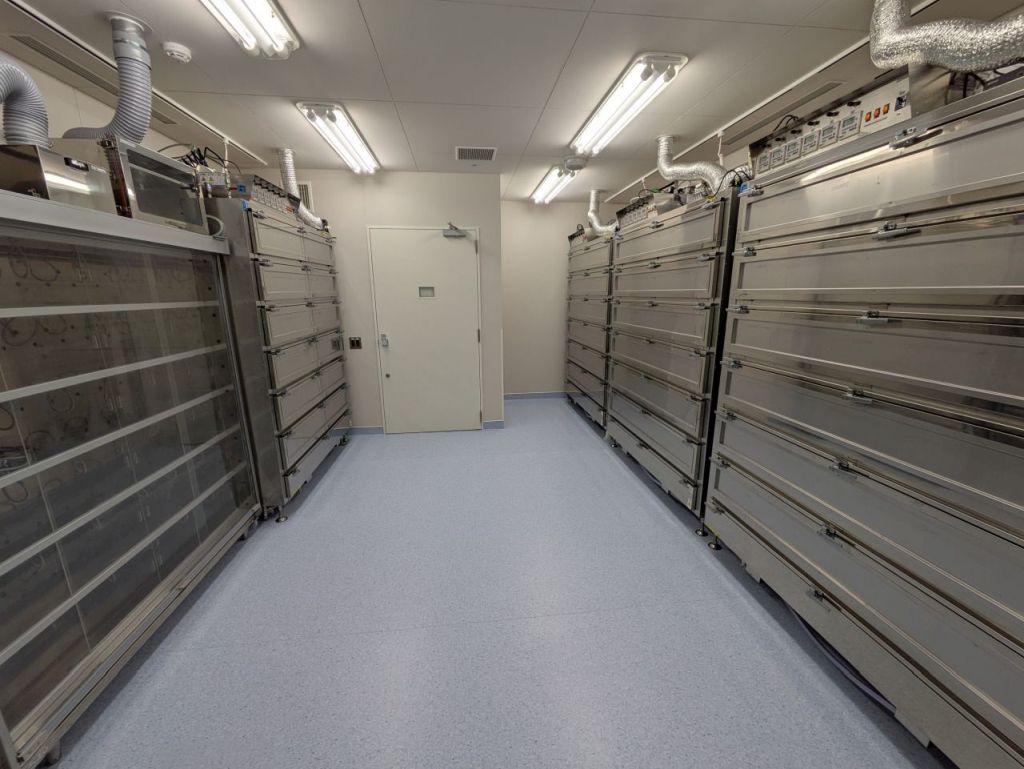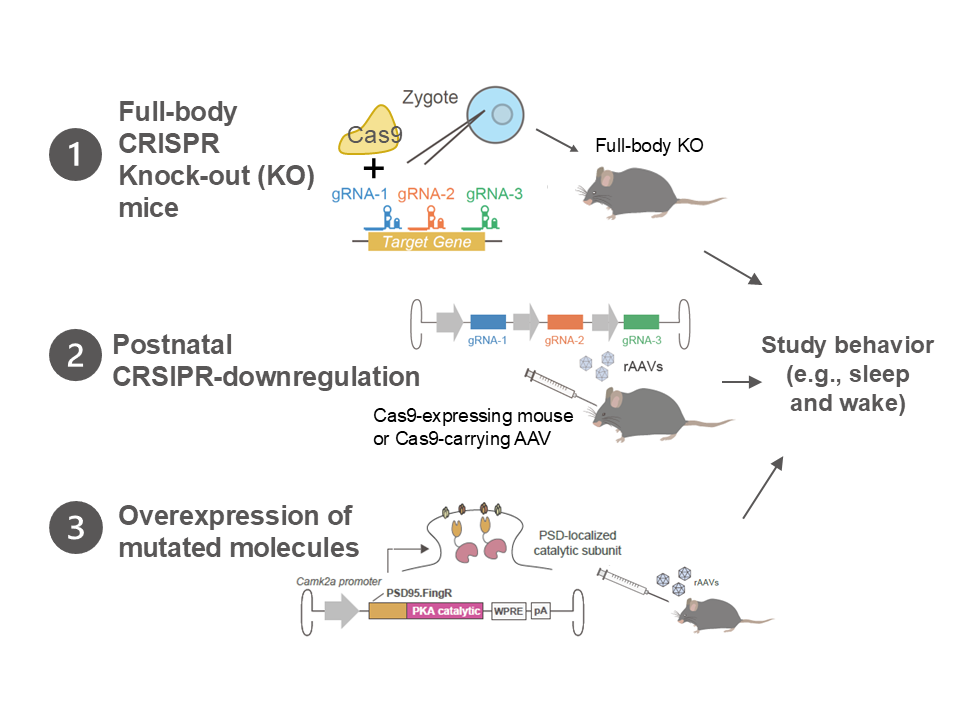Key Methodologies
Sleep & Wake Behavior Analysis
- Non-invasive respiration-based sleep phenotyping: Snappy Sleep Stager (SSS)
- Electroencephalogram/Electromyogram (EEG/EMG) recordings


Automated and high-throughput analysis of sleep and wake states in mice.
Efficient Genetics with Mouse
Advanced genetic manipulation techniques for studying molecular function in vivo.
- Full-body KO by Triple-targeted CRISPR: Gene knockout using three different guide RNAs (gRNA-1, gRNA-2, gRNA-3) via fertilized-egg injection.
- Postnatal CRISPR-downregulation: Targeted gene downregulation after birth using adeno-associated virus (AAV).
- Overexpression of mutated molecules: Introducing mutated genes (e.g., loss or gain-of-function mutations) via AAVs for specific molecular manipulation.

Enabling precise control over gene expression and protein function in live models.







